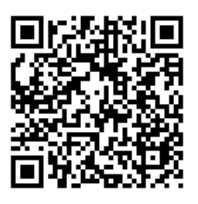Featured Report
Gold Demand Trends Q3 2022
Gold demand (excluding OTC) in Q3 was 28% higher y-o-y at 1,181t. Year-to-date (y-t-d) demand increased 18% vs the same period in 2021, returning to pre-pandemic levels.
Central bank accounting practices for monetary gold - 2022 update
The diversity of monetary gold accounting practices prompted the World Gold Council to undertake a study of central bank monetary gold accounting practices, first published in 2016 and updated in 2022 as Central bank accounting practices for monetary gold – 2022 update. The update adds central banks covered, better aligns practices with accounting frameworks, and expands the number of gold accounting issues covered.
Gold Demand Trends Q2 2022
Gold demand softened in Q2. Despite Q2 weakness, strong first quarter ETF inflows fuelled a notable H1 recovery Gold demand (excluding OTC) was 8% lower y-o-y at 948t. Combined with Q1 this took H1 demand to 2,189t, up 12% y-o-y.
Gold Mid-Year Outlook 2022
Investors face a challenging environment during the second half of 2022, needing to navigate rising interest rates, high inflation and resurfacing geopolitical risks. In the near term, gold will likely remain reactive to real rates, which in turn will respond to the speed at which global central banks tighten monetary policy and their effectiveness in controlling inflation.
Gold Demand Trends Full Year 2021
Strong Q4 lifts full year demand 10%
Annual demand recovered across virtually all sectors – the notable exception being ETFs, which saw net annual outflows
Central Bank Digital Currencies and Gold
Together with our partners at OMFIF, we have written a report on the development of central bank digital currencies (CBDCs) and the implications for the gold market. CBDCs can potentially enable a wide range of new features. Money can become programmable, allowing policymakers to incentivise certain spending behaviours that can optimise economic impact or address social concerns. The trackable nature of CBDCs can also help to deter financial crimes. The ability to easily deploy “helicopter money” may also spark concerns about inflation.
Monetary Gold and Central Bank Capital
This paper looks at the vulnerabilities specific to central bank balance sheets and discusses how gold holdings can mitigate the risks posed. In particular, it focuses on the way gold holdings can affect the revaluation reserves that form part of central bank equity.
Central Bank Domestic ASGM Purchase Programmes
Gold has been at the heart of central banking for centuries. Once an official currency, it has become a cornerstone of modern reserve management. Emerging market central banks have been particularly active purchasers in recent years, and have occasionally acquired gold from local artisanal and small-scale producers.
Gold deposit rates - a guidance paper
In this paper, we seek to answer those questions by assessing how gold lease rates have been affected in the past through changes in the demand to borrow gold and the supply of gold available for lending.
Gold and central bank reserve management during the Covid-19 pandemic
Central bank reserves are typically constructed according to three guiding principles: safety, liquidity and return. The Covid-19 pandemic has reinforced the significance of these principles and, by extension, the importance of smart and sustainable reserve management.
